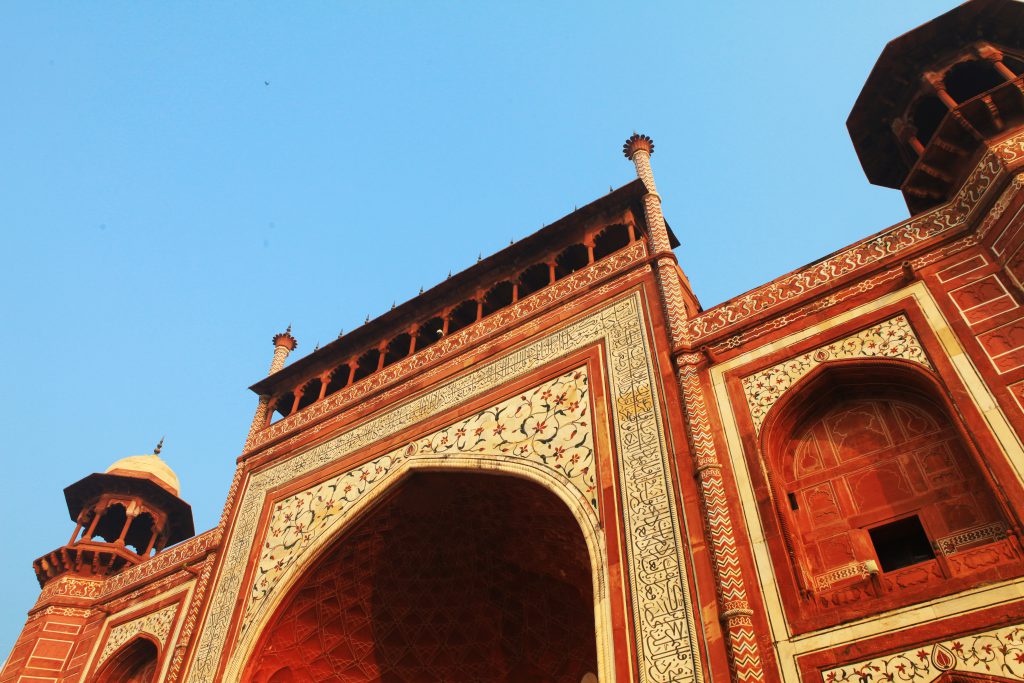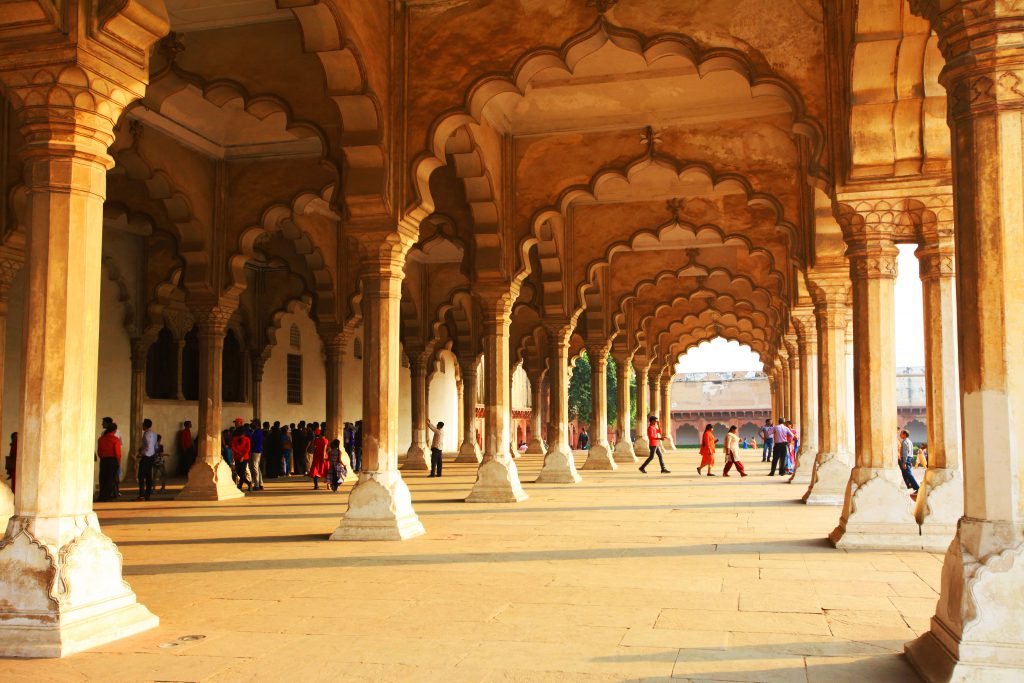Thai A
If the Taj Mahal takes your breath away with its elegance and sophistication, Agra Fort displays the splendor of a cultural pinnacle

When in Agra, a city located in India’s Golden Triangle, visitors cannot miss the Taj Mahal, a symbol of eternal love, and the distinctive red Agra Fort, set on the west bank of the Jumma River. Work started on this fort in 1573 under the orders of King Akbar of the Mughal Empire. This historic fort is more of a palace complex than a military structure. Indeed, as soon as they pass through the gates of Delhi and Amar Sing, visitors find luxuriant greens and a complex of palaces in Indo-Islamic architectural styles. If the Taj Mahal takes your breath away with its elegance and sophistication, Agra Fort displays the splendor of a cultural pinnacle, with architectural details that exude dignity and glamour.
A moat runs around the fort, with mighty walls that stretch for 2.5 kilometers and boast high watch towers. These military elements do not make the complex any less splendid. It took 4,000 workers eight years to build the initial fort from red bricks. Later, a red sandstone layer was added to the external surfaces. Most parts of the fort are red, making it best to admire at sunset. Erected as the political center of an empire, beyond the high walls stand multipurpose buildings such as halls for private audiences, lodging facilities, religious sites, and large courtyards, where ancient trees still stand, telling the wind about the ups and downs of this land throughout history.

You might find it hard to take your eyes off the beautiful arched gates or the two tall towers, typical of Islam. It is equally impossible to ignore the row of European-style buildings leading to Diwan I Am, a hall for private audiences built of marble encrusted with gemstones. In fact, once here, visitors will be held spellbound by the elaborate carvings found everywhere. Indian carving techniques impress everyone who has the chance to see them with their own eyes. These decorations make Agra Fort a one-of-a-kind architectural wonder. All the external walls, the walls of the inner palaces, the corridors, and the gardens are decorated with graceful carvings. The fringed roofs, the gables, and the columns are all carved in a synthesized fashion. The greatest wonder is that pieces of marble walls are perforated with soft patterns, serving as room dividers and impressive decorations. This is all thanks to the dedication of Shar Jahan, Akbar’s grandson, who had a number of marble buildings erected inside the red fort, and the Taj Mahal built nearby. Viewed from Agra Fort, the Taj Mahal exhibits a magical charm that no words can describe. This is also a testament to Shar Jahan’s undying love for his beloved wife.

Thanks to the relentless renovations and constructions ordered by many generations of rulers, the city of Agra is proud to present its red fort to visitors. This architectural marvel is not inferior to any wonders of the modern world. If you have already planned a trip to India, then Agra should not be left out of your itinerary. In the near future, it will be easy for visitors from Vietnam to travel to this colorful and culturally rich nation aboard Vietnam Airlines’ flights in their journeys to explore the world.










